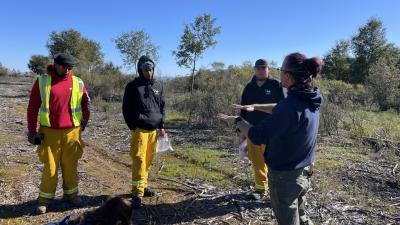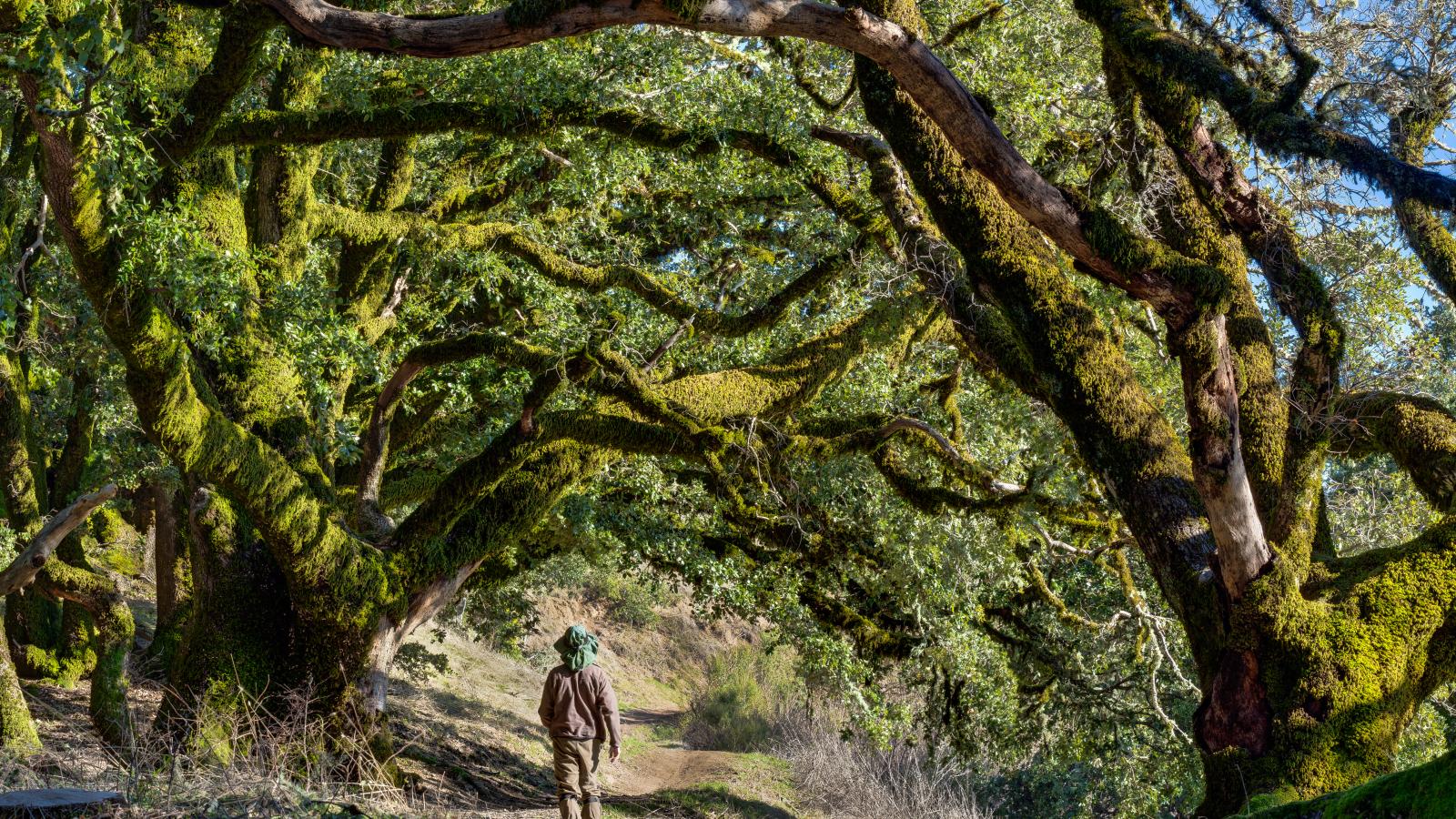Midpen is helping transform an area of Bear Creek Redwoods Open Space Preserve that was originally a vineyard into a climate-resilient and biodiverse oak woodland. Midpen staff and members of the San Francisco Conservation Corps (SFCC) recently took to the vineyard and planted over 300 acorns, 100 of which are projected to grow into full-fledged coast live oak and black oak trees.
“The land had been a vineyard for so long that we weren’t able to find out which plants and trees grew in that particular area before the 1940s and 50s,” Midpen vegetation ecologist Coty Sifuentes-Winter said. “But we were able to figure out whether it was originally a grassland or a forest. Our tests found that it was originally a forest.”
Midpen ecologists determined that it would be appropriate to restore the landscape to an oak woodland given the history of the land and the ecological benefits that the habitat would provide to the area.

Oak trees are champions of biodiversity. They provide food, shelter and habitat to countless birds, mammals, fungi, insects and spiders. Humans have also utilized oaks – people indigenous to the region have collected acorns from oak trees to make acorn flour for millennia.
In addition, oak woodlands are well-adapted to California’s wildland fire cycles. Their thick bark resists heat and protects the cambium cell layer, which is vital for tree growth through the production of new bark and wood.
As this restoration effort moves forward, Midpen ecologists face a unique management challenge with the spread of sudden oak death, a disease caused by the fungus-like plant pathogen Phytophthora ramorum. The disease infects and kills several native oak species, including coast live oak and black oak. Oak trees are terminal hosts for the pathogen, meaning they cannot spread the disease once infected. Midpen will closely monitor trees for symptoms and only remove diseased trees if they become a safety hazard, or if the dead material poses a fire hazard.
“We hope to restore a slice of these vital ecosystems back to California,” Sifuentes-Winter said. “They will be crucial in creating resilience to climate change in these preserves, and for the Bay Area.”

